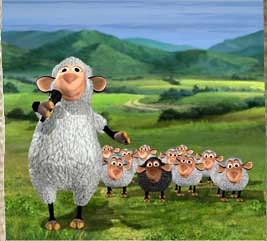The finalists for tonight’s PRIX JEUNESSE Award Ceremony were just announced. In this case, “finalist” includes the top three rated programs in each major category (12-15, 7-11 Fiction, 7-11 Non-Fiction, Up to 6 Fiction, Up to 6 Non-Fiction), plus contenders for the special prizes: UNICEF, UNESCO, Next Generation, Gender, Youth and Children’s Juries. So, not every program in the list below will take home an honor, and some may win more than one.
In any case, the geographic, genre, content and other diversity of the list below is impressive! I’ll be reporting the winner as soon as possible after the ceremony.
Nominees – top three in each category, plus the special prizes (UNICEF, UNESCO, etc.)
Sexteens, Argentina – A short clay animation encouraging safe sex
The Daltons, Netherlands - The full cast returns to a drama series that was a hit ten years ago; now, the young children are teens and this episode deals with first loves forming and breaking
Love Agents, Sweden – Tweens give relationship advice and help a peer make a date
Under Pressure, Germany – A crime drama with teen protagonists
Buddyz on the Move, South Africa – A non-fiction offshoot of the legendary South African drama series “Soul Buddyz,” here a village of children helps a classmate afflicted with HIV get a cell phone so she can keep up with her classmates, and helps her grandmother keep her house.
Mathematica, Japan – Clear and innovative graphic demonstrations of math concepts.
The Gift, Norway – Children submit a request to give a friend a special gift; here, two girls arrange a day as a fashion model for a friend who is recovering from cancer.
On the Block, Ireland – Youth made documentary about the dismantling of their neighborhood housing estate, and their impending move to new homes.
The Wrong Trainers, UK – Animated stories of children living in poverty in the UK.
Desperados, UK – Comedic drama around the formation of a wheelchair basketball team.
Genji, Netherlands – A little girl learns martial arts to ward off a bully who terrorizes her and a blind friend.
The Magic Tree: Devourer of Books, Poland – Multi-PRIX JEUNESSE winner Andrzej Maleszka’s newest episode of his anthology series, this one about a cupboard that turns books into cakes that give the consumer all the book’s knowledge.
Shaun the Sheep, UK – Aardman Animation series built around a sheepdog and his flock.
Mortified, Australia – An early teen-angst sitcom covers crushes on older boys and fear of having “the talk.”
Peek a Boo – Happy Hands, Japan – Baby TV that has been on air for 20 years in Japan.
Numbers and Beards, Sweden – Not a math series, just an innovative, if not unusual, way of sharing a love of numbers with pre-schoolers.
Outside, Netherlands – Documentary footage of children at play, animated to reveal their fantasies
A Sunny Day, Germany – A one-off animation in which a very proud sun rises, spends the day, and sets, showing all the people and animals who are influenced by its rays and heat.
Adriaan, Netherlands – Adriaan’s dog, Spottie, has died; he and his father make plans for the burial.
Christmas with Linus and His Friends, Norway – Part of a 24-episode Christmas mini-series, Linus’ little sister, given to lying about everything, runs away to “Japan.” We see the adventures she has, but only at the end of the day do her parents realize there’s more to her tall tales then they think!
Tsehai Loves Learning, Ethiopia – Puppet series targeting Ethiopian children’s physical and emotional health.




































